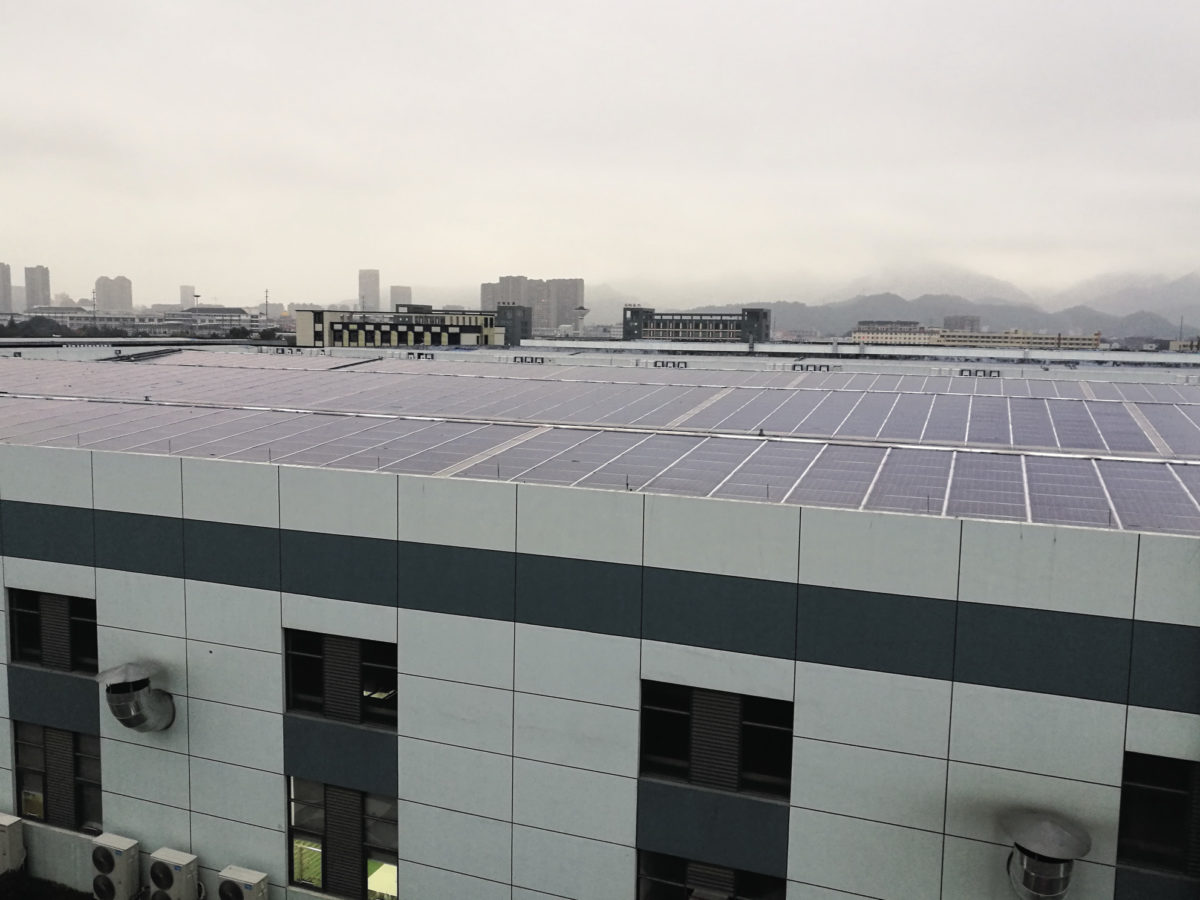From pv magazine, February 2019
Li Xinfu has a vision for his company and the global PV industry: “Solar PV is going to every family and every house in the near future,” he said. In other words, the renewable energy is on the cusp of becoming truly mainstream, thanks to the price and efficiency achievements PV has secured and innovative companies such as Hangzhou-based SolaX Power, which Li heads as president and chairman.
Li founded SolaX Power in 2007 and in its first year the manufacturer generated RMB3 million ($445,000) in revenues. More than 10 years later, the company had estimated annual revenues of RMB130 million for 2018, and an R&D team of more than 300 engineers.
Li is very proud of his engineering team and the hard work it has taken to develop a large product range of string and hybrid inverters and battery storage products. At home in China the company has even developed a building-integrated PV (BIPV) business, which includes a strategic partnership with China’s leading grid transmission company, the State Grid Corporation of China (SGCC).
To date, the company has installed 300 MW of BIPV projects in mainland China. The focus of the business is commercial and industrial rooftop installations, which SolaX offers to enterprises as part of its joint venture with SGCC. The State Grid Corp holds 70% of equity – and SolaX 30% – of a joint venture between the two. As part of the offering, customers receive a free BIPV rooftop, and in return commit to purchasing electricity at a discounted rate from the joint venture. The JV’s largest project to date is a 19.8 MW rooftop in the port city of Ningbo – one of the largest shipyards in China.
Residential solutions
The core of SolaX’s technology is its inverter and battery storage. Here the sweet spot is not commercial installations but residential rooftops. Today’s inverter manufacturers not only have to deal with a wide range of grid requirements in a variety of jurisdictions, but also have to cope with diverse scenarios. In a conventional set-up, the inverter’s main duty is to take DC electricity from PV arrays and export it to the grid. In other situations, output has to be limited to comply with grid requirements. Then there is the move to self-consumption and storage. And finally, there are cases where the end user – commercial or residential – wishes to import grid electricity to a battery, to play arbitrage, or to be able to island a business or home grid when outages occur.
SolaX Power’s X-Hybrid solar energy storage system can handle all those scenarios. The system can work with a range of lithium-ion residential battery units and different versions offer a variety of capabilities. For example, the “E” version comes with an emergency power supply (EPS) function, valuable in countries such as Australia, where grid outages have frustrated many a homeowner and business.
Over in Europe’s Benelux region, SolaX has become a leading supplier of string inverters, both for residential and commercial-industrial applications. In most cases the application involves grid export from rooftop PV systems to tap feed-in tariffs in the region.
Installers in Benelux countries and the 46 other markets served by SolaX around the world can tap a broad portfolio of string inverters: from the single-phase X1 MINI to larger three-phase units in the X3 product family. The X3 range goes from 4-36 kW, all without an internal fan, and they are IP65 rated across the board. Optionally, they can be outfitted with “plug and play” wi-fi, making the move to the SolaX Cloud even easier. End users can use a smartphone app to tap into the SolaX Cloud to monitor PV generation and select appliances to power with PV electricity.
SolaX battery
According to Li, the firm’s “target is to provide a one-stop solution for end users”. Engineering complete solutions is the manufacturer’s mantra, and the company has a high-spec production plant with an annual capacity of 4 GW.
SolaX also develops and manufactures lithium-ion batteries, and obviously the company’s batteries are the optimal choice for its energy storage inverters. The SolaX Battery/Triple Power battery offers a lifetime of 6,000 cycles, discharge depth of 90%, and a 10-year warranty. The product comes in two models – 4.5 kWh and 6.3 kWh – and multiple units can be integrated with the manufacturer’s energy storage inverters. Like many vendors in the top-tier residential battery segment, SolaX sources its lithium-ion cells from South Korean manufacturer LG Chem.
According to Li, “2019 promises to be a big year for residential battery storage”. He sees the gap between residential retail rates and the residential levelized cost of electricity for PV systems narrowing, thereby obviating the need to subsidize PV. In countries such as China, where retail electricity rates are relatively low, residential PV still has a hill to climb to convince end users to adopt solar without subsidy. In many markets in Europe, though, the gap has dwindled, making homegrown PV an increasingly attractive alternative to buying power from the grid. Adding battery storage to a PV system makes it even more attractive, especially if lithium-ion battery prices decline as manufacturing capacities increase.
As PV subsidies decline in importance, the policy actions – or inaction – of governments becomes less critical to the PV industry’s success. With that situation on the horizon, Li might not be far off the mark with his prediction that “solar PV is going to every family and every house in the near future”. At that point, SolaX Power might be a household name in markets around the world.
This content is protected by copyright and may not be reused. If you want to cooperate with us and would like to reuse some of our content, please contact: editors@pv-magazine.com.



Can solar work with inverter without no battery